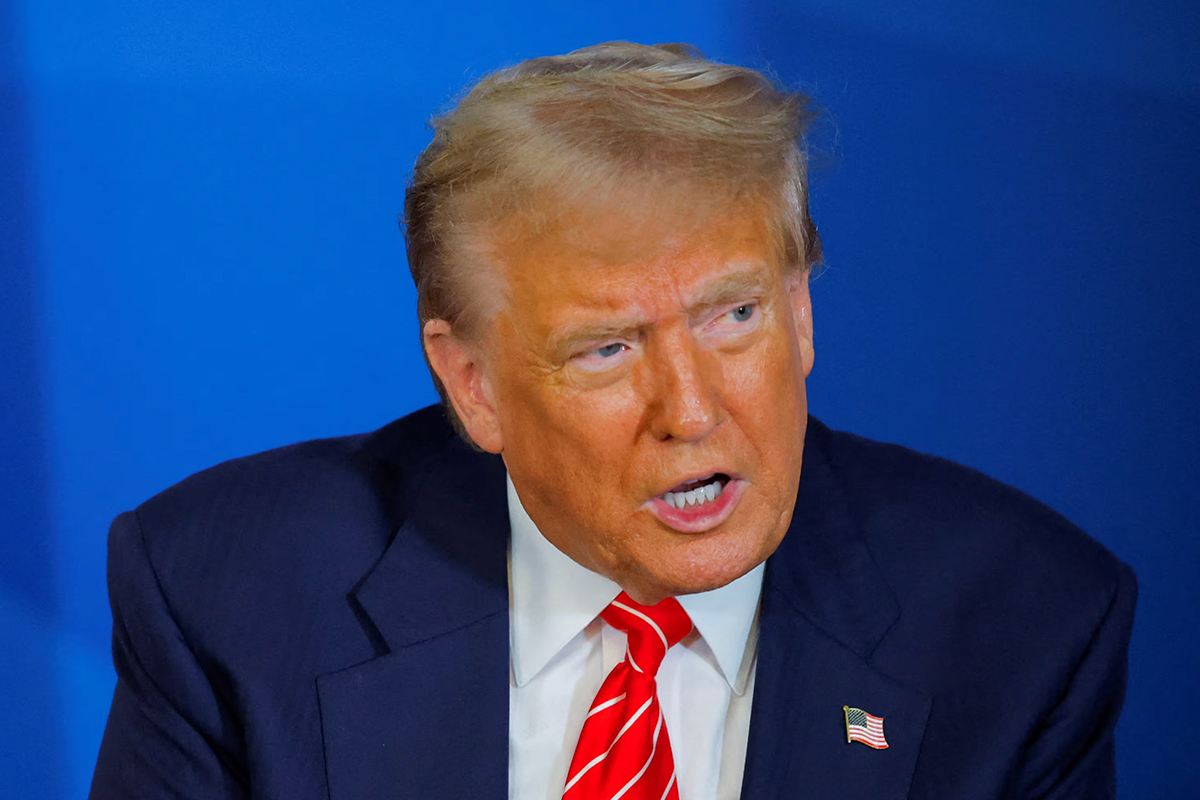Crypto In 2025: Buy, Wait Or Exit?

As cryptocurrency markets navigate through mid-2025, investors face a complex landscape of soaring prices, regulatory shifts, and evolving institutional adoption. With Bitcoin touching new heights over $110,000 in June 2025, the question among investors is whether this represents the ideal entry point or a dangerous peak.
The bull case: Momentum and institutional backing
The numbers offer a compelling outlook for crypto enthusiasts. Bitcoin has already made headlines this year by surging past its previous all-time high, touching over $110,295 in June 2025 before stabilising around $105,000 to $107,000. This performance has sparked enthusiasm among both retail and institutional investors.
“One reason why now could be a good time to invest in crypto is that generally risk assets such as crypto have performed well when financial conditions globally are loose and money is more available,” by Simon Peters, Crypto Analyst at eToro said in an exclusive interview with Arabian Business.
The forecast from industry analysts remain optimistic. Bitcoin is projected to trade between $80,440 and $151,200 in 2025, with stretched targets of $175,000 to $185,000. Standard Chartered’s Geoff Kendrick has been particularly bullish, forecasting BTC could climb to $120,000 by mid-year, with the potential to hit $200,000 by year-end.
“Global liquidity – essentially how much money is available in the global economy and a metric which the crypto markets closely mirror – is forecast to increase throughout the remainder of the year. Governments have trillions of dollars of debt from past years to refinance. Whether it is through quantitative easing or other means, as more money becomes available or newly introduced, it tends to find its way into markets, pushing up asset prices,” Peters explained.
The broader fundamentals also appears strong. The global digital currency market size was estimated at $5.7 billion in 2024 and is projected to grow at a CAGR of 13.1 per cent from 2025 to 2030. This growth is being driven by institutional adoption and mainstream acceptance, with decentralised currency companies employing about 1.9 million people worldwide, with 228,700 new jobs added last year.
“Furthermore, as interest rates and borrowing costs fall for the consumer, the oversupply that was once going to debt repayments may find its way into crypto markets,” he added.
Volatility and risks persist
The virtual currency market’s volatility continues to remain a concern. The first quarter of 2025 proved challenging for the market, with Bitcoin suffering its worst quarter performance in seven years, characterised by significant volatility and a prevailing downward trend.

“Before investing in general, one needs to consider their time horizon, i.e how long they can stay invested, as this will dictate how far along the risk curve one could go and if crypto should be considered in the first place. If the investor has a long-time horizon then crypto, as it is generally considered the most volatile of the asset classes, could be considered,” Peters explained.
Regulatory uncertainty continues to shadow the market. The Bookings Institution highlighted ongoing concerns about market integrity, highlighting that this regulatory gap has created an environment in which scams, market manipulation, and misleading markets flourish, often retail investors’ expense.
The scale of market manipulation remains substantial, with Chainalysis’ 2025 Crypto Crime Report identifying over $2.57 billion in potential “wash trading” activity.
The International Monetary Fund (IMF) warned about systemic risks, particularly in emerging markets. Widespread adoption of blockchain-based assets in these countries could undermine the effectiveness of monetary policy, circumvent capital flow management measures, exacerbate fiscal risks and divert resources from financing the real economy.
Financial crime remains a persistent challenge, with regulators and policymakers expected to focus scrutiny on crypto-enabled investment scams frequently known as “pig butchering” throughout 2025.
Peters also highlighted the impact of geopolitical factors on the crypto market, explaining that, “Geopolitical factors such as the current conflict in the Middle East could cause some fear and uncertainty to spread amongst markets, crypto included. If the agreed ceasefire between Israel and Iran is broken, we could see a sell-off.”
“In addition, reciprocal tariffs imposed by the US on its trade partners will be one to watch in the coming months as this has impacted crypto markets previously,” he added.
The regulatory landscape
The regulatory environment is experiencing significant changes that could impact investment decisions. Early 2025 has seen a surge in legislative proposals aimed at imposing stricter disclosure requirements, improved reserve management, and operational transparency for stablecoin issuers.
The Trump administration’s crypto-friendly stance has created new optimism in the sector. The administration’s support for stablecoins and other cryptocurrencies could reduce regulatory enforcement and drive adoption, according to Grant Thornton’s analysis.

The shift was highlighted at the World Economic Forum’s Davos 2025 meetings, where Donald Trump’s pro-crypto stance is expected to lead to new regulation in the US, with experts discussing whether other countries might follow suit.
The Middle East: A regional crypto hub
The Middle East has emerged as a strong player in the global virtual currency landscape, with the UAE leading regional adoption and regulatory clarity. The UAE handled over $25 billion in crypto transactions in 2022, with over 1,000 crypto firms operating under strict licensing and AML rules, positioning the country as a leading crypto-friendly jurisdiction globally.
Dubai has established itself as a global crypto hub, with Statista predicting that the market in the UAE will reach $254.3 million in revenue by 2025. The emirate’s regulatory framework, overseen by the Virtual Assets Regulatory Authority (VARA), has attracted international attention and investment.
Recent developments highlight the UAE’s commitment to digital assets. In December, the state introduced its first UAE dirham-backed stablecoin – AE Coin, and last month, investment group MGX made a $2 billion investment in Binance – one of the largest deals ever in the crypto industry. This level of institutional commitment signals the country’s intent to become a global digital finance center.
The broader MENA region shows significant crypto adoption, with Turkey ranking as the largest market in MENA and seventh globally, receiving $136.8 billion in value. The UAE’s balanced market benefits from regulatory clarity, while Turkey sees market maturation from stablecoins and high consumer engagement.
However, the regional landscape remains varied. Saudi Arabia maintains a more cautious approach, with crypto having quasi-legal status, while Qatar imposes more restrictive measures.
Saudi Arabia’s cautious approach hasn’t prevented significant investment interest. Corporate venture capital investors accounted for 30 per cent of all unique investors in Saudi Arabia’s venture market in 2024, higher than any other country in the MENA region. Additionally, Saudi Arabia’s commitment to $600 billion in U.S. investments, with $20 billion going into AI and data centres, positions the crypto and blockchain industries to benefit from this infrastructure surge.
The regional crypto ecosystem’s maturation is evidenced by global venture capital investments in crypto companies totalling $5.4 billion in the first quarter of 2025, the best quarter since mid-2022, with significant activity centred in Dubai and the broader Gulf region.

Investment considerations for 2025
For potential investors considering cryptocurrency exposure, several factors warrant careful consideration:
Market timing: While Bitcoin has showed remarkable gains, conservative forecasts place Bitcoin trading consistently above $80,440 throughout the year, while more bullish projections suggest a ceiling of $151,200. This represents significant potential upscale but also substantial downside risk from current levels.
Portfolio allocation: The recommendation from established financial advisors suggests that crypto can play a meaningful role in diversified portfolios but the 10 per cent to 40 per cent allocation range indicates this should be balanced against traditional assets and individual risk tolerance.
Regulatory evolution: The changing regulatory landscape presents both opportunities and risks. While a more favourable regulatory environment could drive institutional adoption, new rules could also impact market dynamics and individual investment strategies.
Technology and adoption: The employment growth and institutional infrastructure development suggest the cryptocurrency ecosystem is maturing beyond speculation toward utility-driven value creation.
Cautious optimism with risk management
The current market presents opportunities alongside substantial risks. The combination of improving institutional adoption, favourable regulatory trends, and continued technological development supports the case for strategic crypto exposure. However, the market’s inherent volatility, regulatory uncertainties, and potential for manipulation demand careful risk management.
“Understand your time horizon first and how long you are prepared to be invested for. If you will need your capital back soon, perhaps you’re looking to put a deposit down on a property for example, then crypto is probably not the best asset class to invest in at this moment in time,” Peters said.
For those considering investment in 2025, the key lies in implementing a disciplined approach that aligns with personal risk tolerance and investment objectives. The dramatic price movements seen throughout 2025 demonstrate both the potential rewards and the risks that continue to define this evolving asset class.
“If you are prepared to hold for years then crypto could be an asset class to consider. Holding long-term gives you time to see a potential return on investment, as well as time for the crypto markets to recover from any crashes that could and very often do happen,” he explained.
As with any high-risk, high-reward investment, education, proper diversification, and careful position sizing remain the fundamental principles for navigating the dynamic market.
“Finally, only invest with money that you can afford to lose. Rather than deploying all of your capital at one time, consider dollar-cost-averaging (i.e. investing a fixed amount of money into an asset at regular intervals) as this could reduce the risk of investing right before a downturn in the crypto markets and also dollar-cost averaging could potentially lower your average cost basis, giving you a greater return in the long run,” Peters concluded.
Family Businesses In Dubai: DIFC And Emirates NBD Sign Strategic Partnership To Support UHNWIs
DIFC and Emirates NBD sign deal to enhance governance, succession planning and wealth preservation for Dubai UHNWIs The... Read more
UAE Announces New VAT Rules Effective January 1, 2026
The UAE issues new VAT amendments effective January 1, 2026, simplifying procedures and tightening refund rules and tra... Read more
Kuwait Approves Penalties For Unlicensed Currency Exchange
Cabinet backs new bill targeting illicit money exchange activity and advances reforms across security recruitment The p... Read more
Saxo Outrageous Predictions 2026: AI CEOs, Chinas Golden Yuan And A Taylor Swift-driven Economic Boom
Saxo Outrageous Predictions 2026 explore AI CEOs, China’s golden yuan, obesity drugs for pets and a Taylor Swift wedd... Read more
Du Pay Tops AED 1.5bn In Digital Transactions As UAE Pushes Towards Cashless Future
Fintech platform marks rapid growth less than two years after launch as it showcases adoption among underserved expat c... Read more
Sharjah Islamic Bank Lists $500m Sukuk On Nasdaq Dubai
Second listing of 2025 under the bank’s $3bn programme reinforces investor confidence and strengthens Dubai’s role ... Read more

